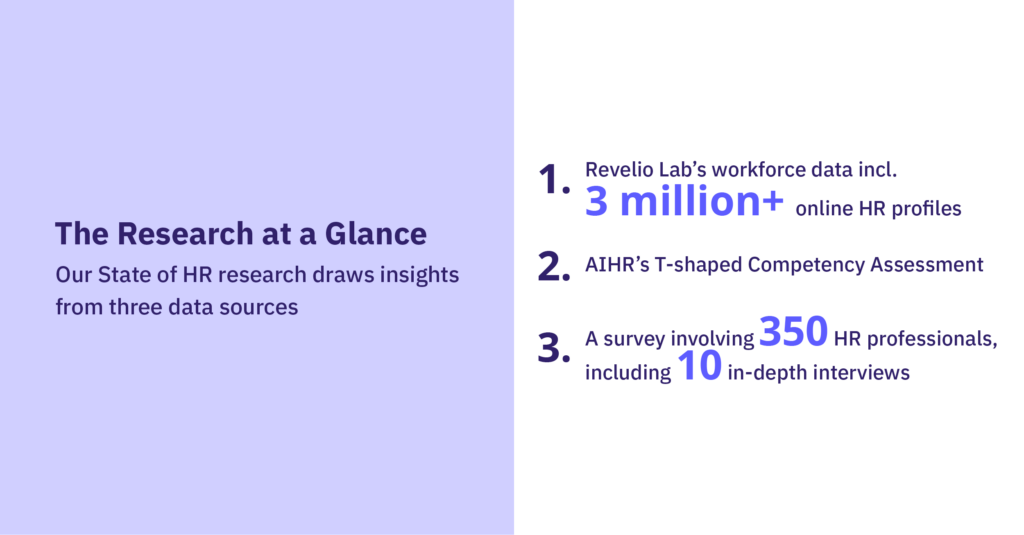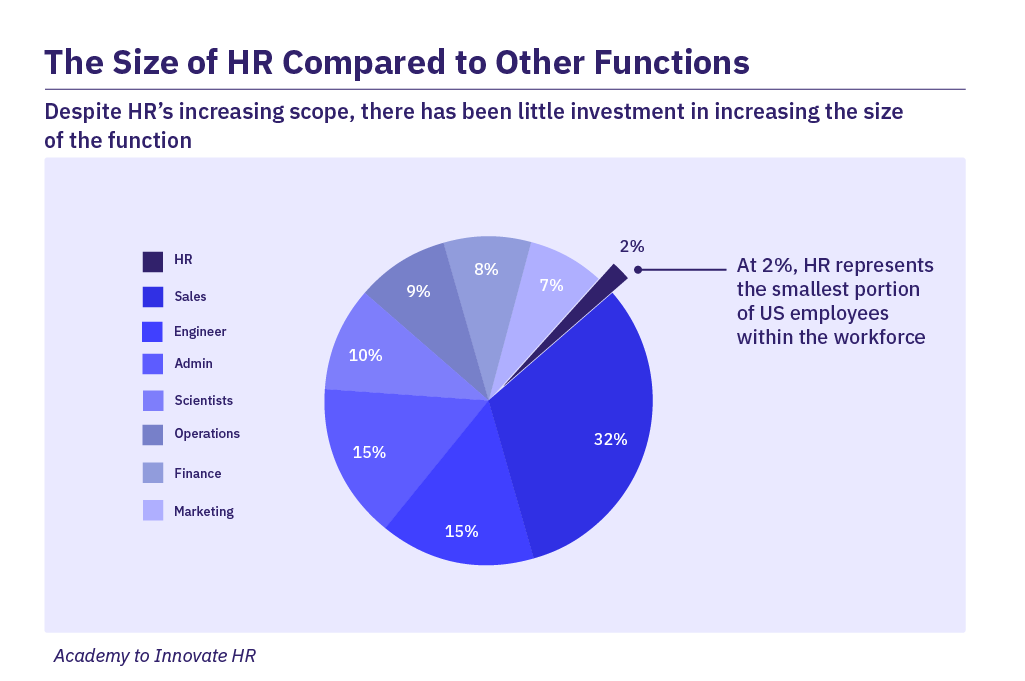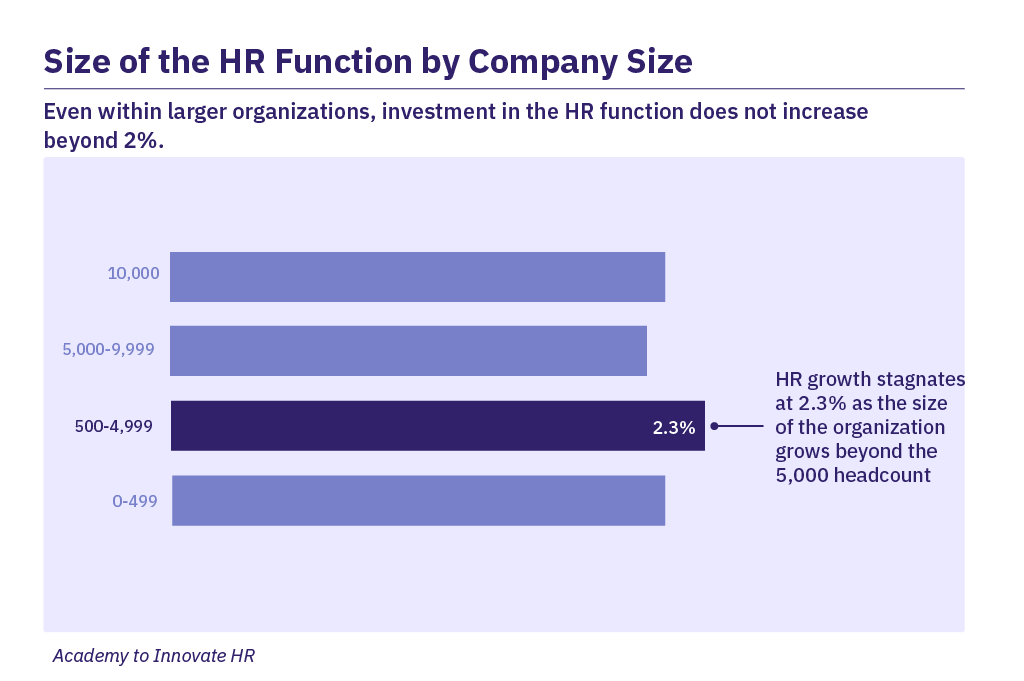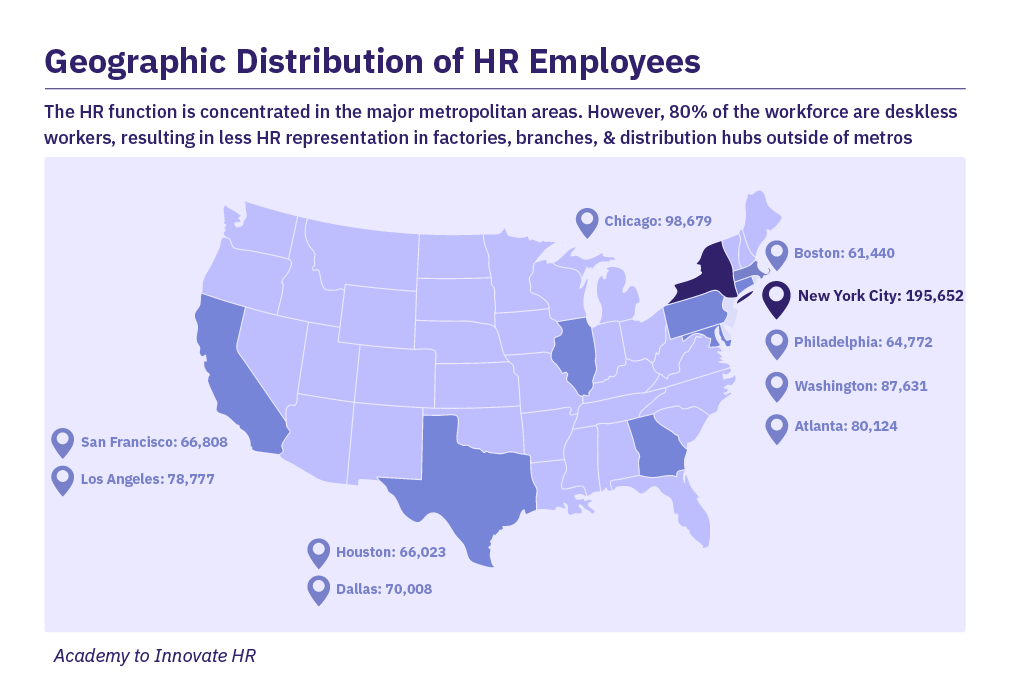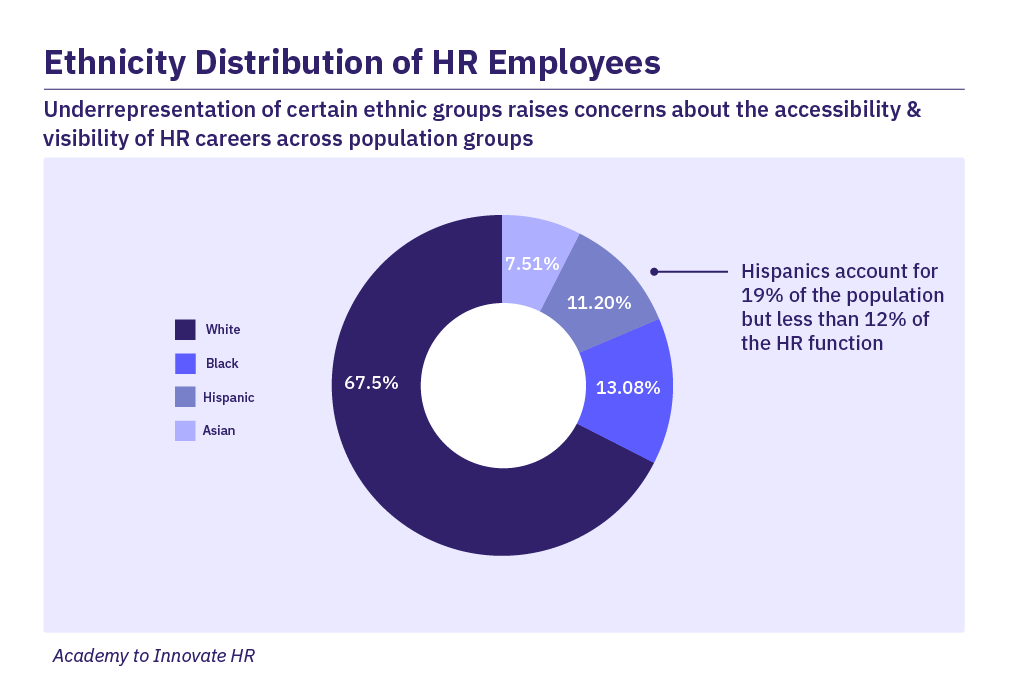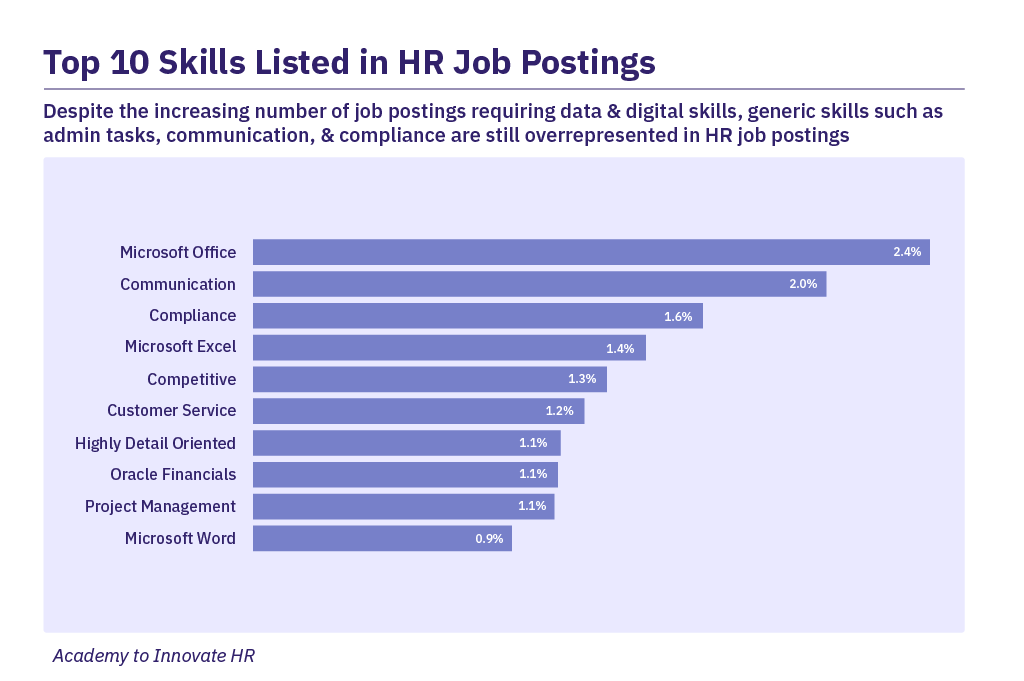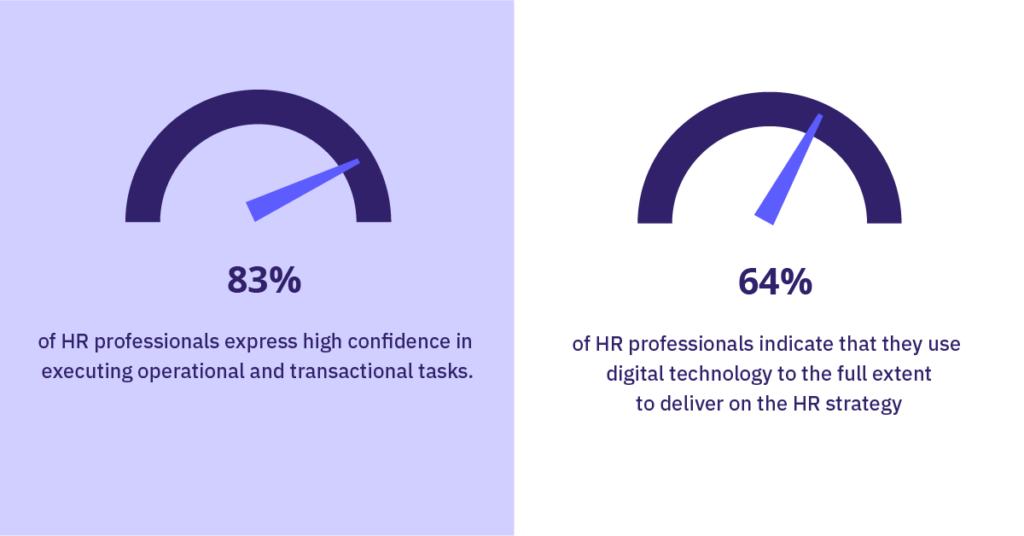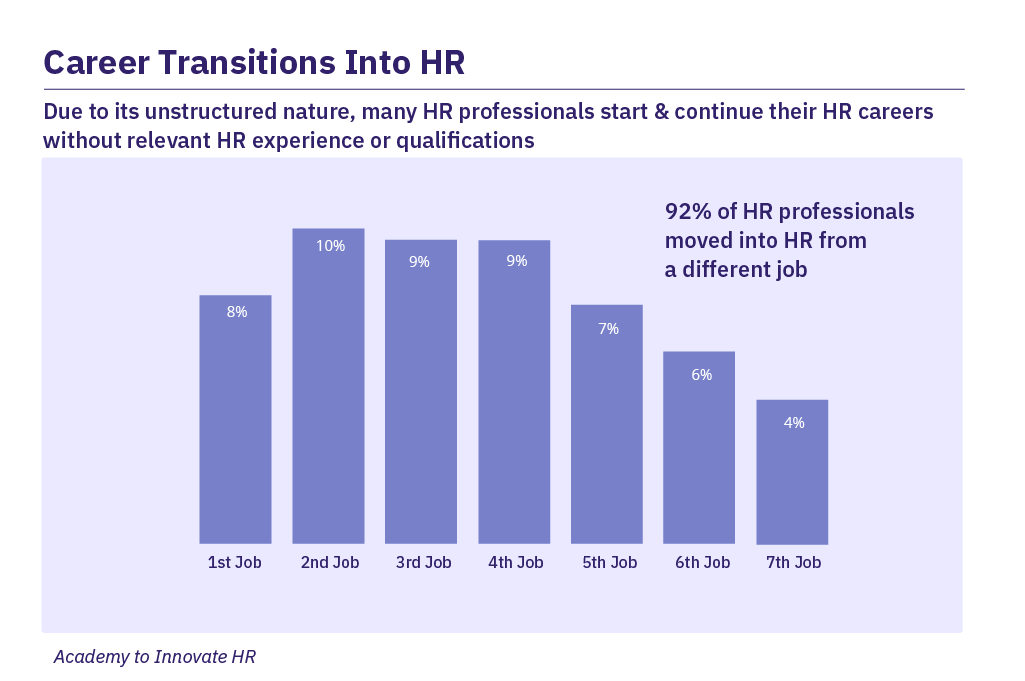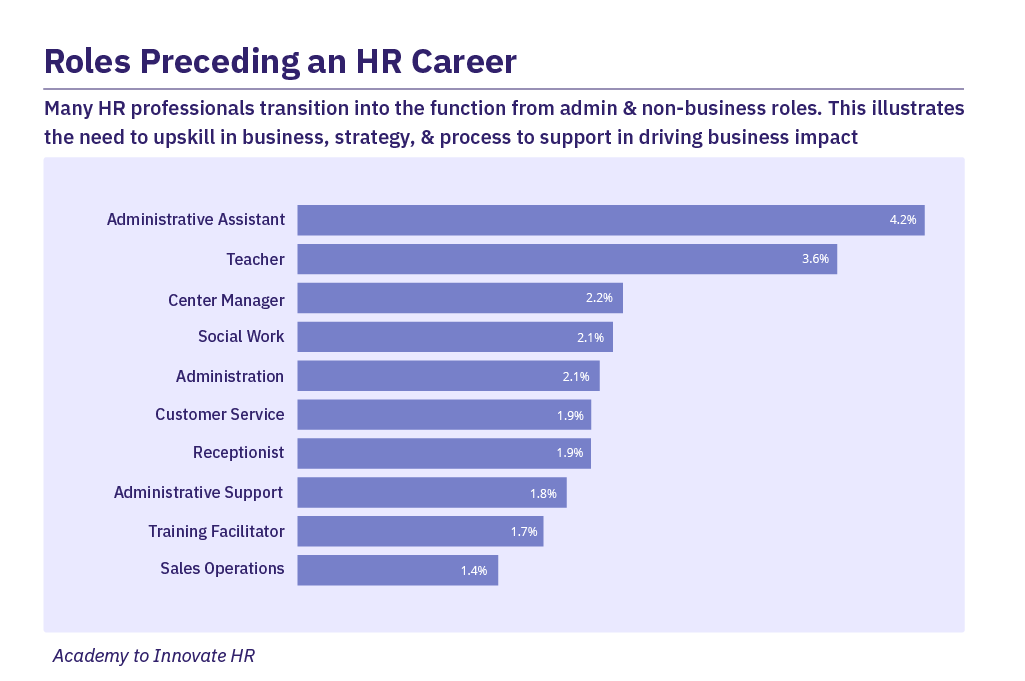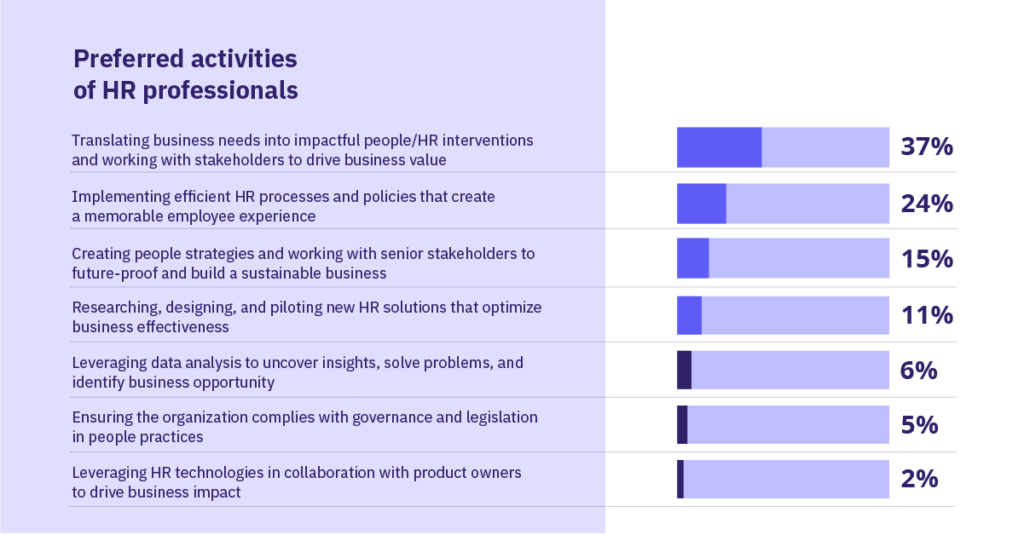The world of work has experienced significant changes in recent years – and is poised for further disruptions driven by labor concerns, talent shortages, and the impact of AI on work. In light of this, the role of HR is becoming increasingly crucial in driving organizational success.
With its cross-functional view of the organization, the HR function can play a key role in preparing the business for the future of work.
But are HR professionals equipped to step up?
To answer this question, we conducted research to assess the current state of the HR function and explore its readiness for the future. The findings provide valuable insights into what HR needs to successfully guide organizations.
The research at a glance
Our State of HR research draws insights from three data sources. This multi-faceted approach allows us to understand the current state of the HR function, the evolving skill sets of HR professionals, the pathways of HR careers, and the challenges and opportunities shaping the future of HR.
THE STATE OF THE HR FUNCTION
Challenge 1. Insufficient investment in HR
The HR function has grown significantly in the last five years, but it still has some catching up to meet its anticipated growth of 10% by 2030.
HR falls behind other functions
While the global HR profession has grown by 8% in the past five years, in the US, this only represents a 2% share of all employees, placing it behind Marketing (7% share of employees), Operations (9%), and Administration (15%). HR is consistently smaller in size compared to other functions.
HR investment and growth
According to a recent Lattice report, over half of HR teams remain the same size, while 14% are decreasing their headcount in 2024. This indicates there is little focus on increasing HR headcount despite an increase in the scope of HR. We also see this in our data, where the headcount investment in HR remains steady at 2%.
HR is predominantly represented in cities
Despite 80% of the workforce being deskless and frontline workers outside of head office environments, HR functions are concentrated in larger metropolitan areas. In the US, the size of the HR function reflects the size of the cities’ working population, which leads to less representation in factories, branches, and distribution hubs.
What this means
- HR capacity is stretched: This creates challenges for the health of HR professionals, their employee experience, and the strength of talent pipelines. HR is also experiencing increased burnout levels among its professionals, with HR departments under pressure to take on more responsibility, expand their scope, and do more with fewer resources.
- HR is seen as a head office function: Lower HR visibility reinforces the belief that HR is a head office function with the primary role of hiring and firing. Meanwhile, the metropolitan concentration of HR highlights potential untapped talent pools in rural areas where HR functions are not represented.
- An investment in HR skills is required: Given current constraints, investing in HR must extend to upskilling, reskilling, and transferring skills that are increasingly important to build broad expertise in the function.
START NOW
Reposition HR operating and resourcing models
- Redesign HR operating models. Align HR operating models with organizational growth and complexity, not just workforce size. Doing so will allow for more impactful HR service delivery and adequate investment in HR resources to fuel business growth and performance.
- Embrace technology. Integrate automation and AI into HR processes to streamline transactional tasks. This allows HR professionals to refocus their time and attention to deliver at scale.
- Distribute HR teams: Align HR teams with the organization’s geographic footprint. This could change the perception of HR as solely a headquarters function. It also enhances visibility and fosters closer collaboration with employees and business units.
Strategically assess the size and composition of your HR function to ensure a diverse skill set and determine how the function can be optimized.
Establish HR functions close to the frontline – tap into geographically dispersed talent pools outside cities and elevate HR beyond a ‘head office’ function.
Challenge 2. HR has a diversity dilemma
Current diversity gaps within the HR functions and their implications need to be recognized. Organizations can then address and build a more inclusive, representative HR workforce that is well-equipped to serve a diverse employee base.
HR’s overrepresentation of women
Women make up 68.2% of the HR function in the US, which is significantly higher than the broader workforce. This overrepresentation trend is consistent globally, highlighting the dominance of women in HR.
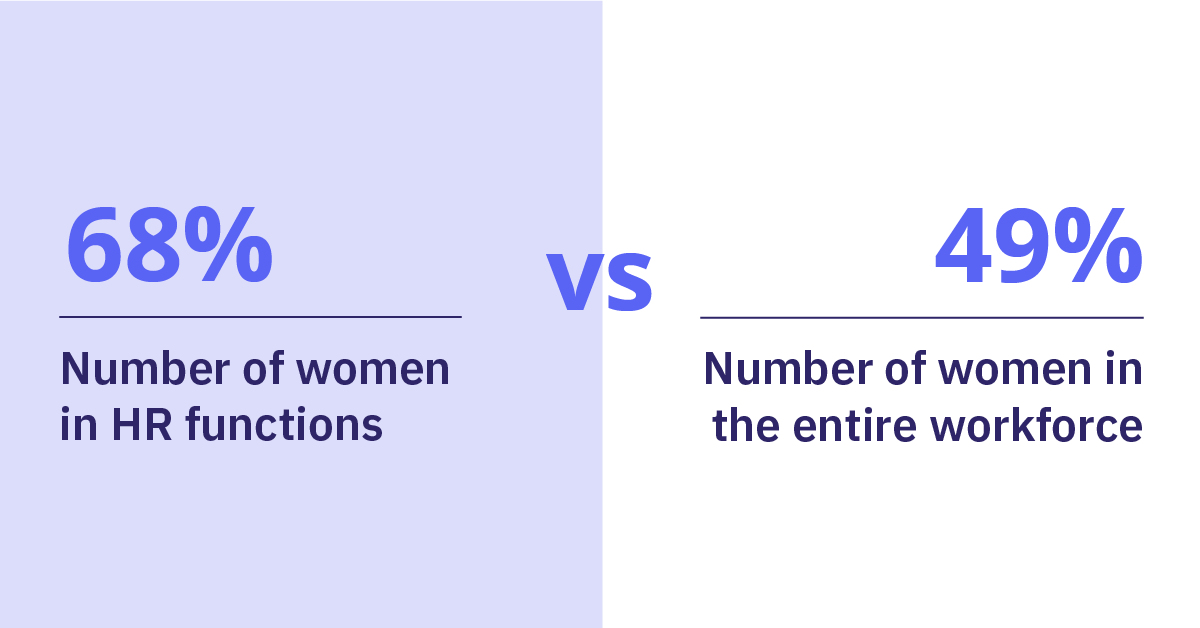
Diversity within HR
Diversity in HR is not representative of the overall population diversity. In the US, the HR function is predominantly white (67.5%). Hispanics are proportionately underrepresented in HR roles, in contrast to their 19% presence in the population.
Youthful HR workforce
Around 60% of HR professionals fall in the 20-40 age range, indicating a relatively young workforce in the HR function. Overall, the HR function represents a relatively homogeneous group.
Imbalance in senior roles
Most HR professionals (57%) hold junior or entry-level positions, while senior roles still lack representation of minority groups. This could potentially limit diversity based on the small number of positions at this level.
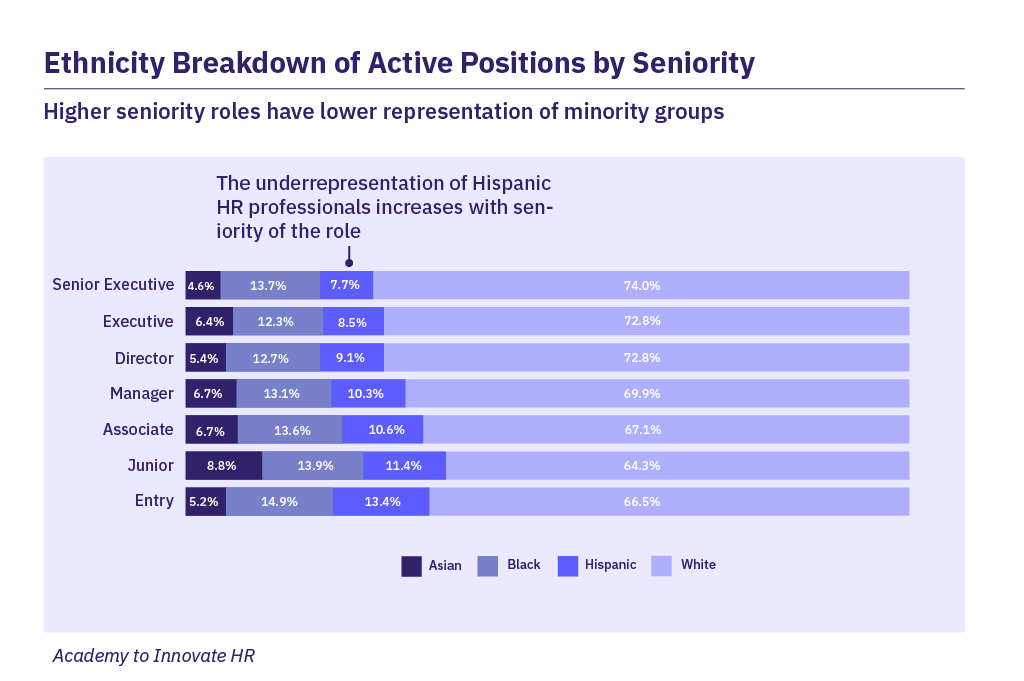
What this means
- Gender stereotypes persist in HR: The overrepresentation of women in the HR profession is likely due to its historical association with stereotypically feminine and “soft skills” focus, which is typically associated with women.
- Lack of representation of ethnic minority groups: The underrepresentation of certain ethnic groups raises concerns about the accessibility and visibility of HR careers across all populations. Disparities in exposure, access, and graduation from higher education may also impact opportunities.
- HR professionals leave the profession at a relatively young age: HR professionals tend to leave at the mid-level career point, resulting in a younger and inexperienced workforce. The lack of structured career progression within HR leads and often limited career paths could impact this. This affects the availability of HR professionals and the development of institutional knowledge.
START NOW
Prioritize diverse talent pipelines and eliminate barriers to entry
- Assess talent pipelines. Actively pay attention to your talent pipelines, where you are sourcing talent from, and the current market perceptions of the HR professional. Similar to what you do for business, you require a diverse sourcing and development strategy to enable the next generation of HR talent.
- Break role stereotypes. HR needs strong leaders and associations to break role stereotypes and become outspoken advocates for the profession. This will showcase the diverse skills and profiles needed for a successful HR team.
Assess the diversity of your HR function – determine to what extent this represents the overall population and the skill sets required.
Define career progression in the HR function and transparently communicate and support this within your organization.
THE STATE OF HR SKILLS
Challenge 3. Mismatched skills and requirements
Today, HR professionals face evolving skill requirements driven by the increasing complexity of the operating environment. This includes the need for business acumen, change management, data literacy, and technology integration. Surprisingly, job postings by organizations don’t reflect these changes.
Prioritizing generic HR skills
Our findings show that the number of job postings requiring data and digital skills has steadily increased, indicating shifting requirements. However, generic skills such as administrative tasks, effective communication, and compliance are still overrepresented in HR job postings.
A mismatch between business needs and HR skills
The skills required by organizations versus those listed by HR professionals reveal a clear misalignment, specifically in leadership, management, and training-related competencies. Our “State of HR Upskilling” report highlighted this gap. CHROs’ top business priorities did not align with the existing skills of HR professionals, which are primarily centered around traditional HR responsibilities like workforce administration.
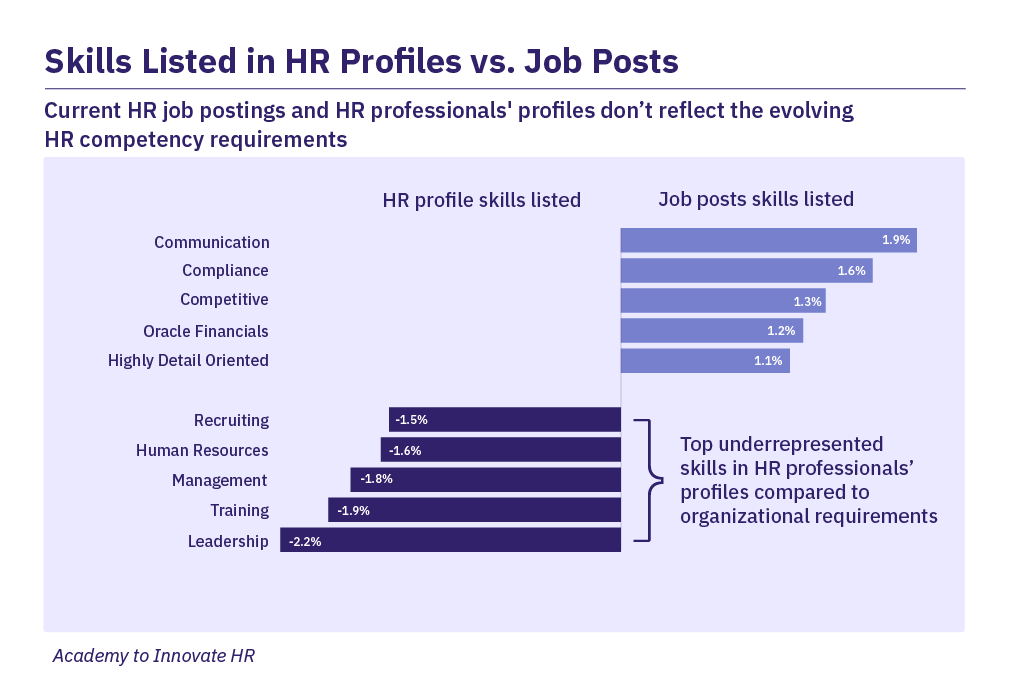
What this means
- Existing HR skills don’t reflect actual HR requirements: Current HR job postings and HR professionals’ profiles don’t reflect evolving HR competency models. This suggests that either these models don’t capture the real-life HR requirements, their implementation lags behind, or the investment in HR skills and development is lacking.
- Lack of well-defined HR roles: Mismatched skill requirements point to a potential problem of ill-defined HR roles that don’t accurately articulate job requirements. The ambiguity in skill requirements could inhibit future exploration and adoption of new HR operating models.
- Inaccurate reflection of HR skills’ development priorities: The lack of clarity in skill requirements undermines HR professionals’ skill development efforts, impacting the reputation and perception of HR within organizations. This also hinders the ability to demonstrate the business impact.
START NOW
Define and implement a holistic HR competency framework that is future-focused and business relevant
- Define and communicate what ‘good‘ looks like: Translate modern competency models into practical job descriptions that align with how businesses perceive the value of various HR roles.
- Redesign HR roles: Redesign HR roles to meet evolving business needs, integrating modern skills like digital and data as core components of the HR professional profile. Help businesses understand what good HR looks like in practice through work design as well as internal change and communication efforts to shift expectations.
Strategically evaluate the HR skills required to ensure successful HR delivery in the future.
Adopt a research-backed HR competency model and translate these competencies into job requirements and skills development priorities.
Challenge 4. Lack of confidence in critical business skills
The HR function is shifting from its traditional administrative role to a strategic and business execution approach, but it still has much progress to make.
This transformation is crucial for HR professionals to effectively contribute to overall business success. However, challenges like a lack of confidence in business and financial acumen and digital skills indicate a need for further development and empowerment of the HR role. This is essential to realize HR’s strategic potential fully.
Hesitancy in applying business acumen skills
Our data indicates that, while HR professionals view themselves as business partners, only 64% feel confident in translating strategy and aligning HR priorities. Additionally, they are less likely to use financial data for HR decision-making.
More experienced professionals with 15+ years of experience tend to rate their business acumen higher. However, given the age profile of the HR function, there is a limited number of professionals who reach this level of expertise.
Execution skills still trump digital skills
83% of HR professionals express high confidence in executing operational and transactional tasks. This could indicate the type of work HR professionals are involved in or their confidence in delivering such work.
HR also shows a willingness to adopt digital and use digital tools and technologies in their daily operations. However, this willingness does not always lead to action, as many HR professionals lack confidence in their digital skills and ability to champion digital initiatives.
HR’s skills and impact expand beyond employee engagement
Our data also reveals that people advocacy remains HR’s main focus. However, this focus has expanded beyond building high-performance cultures and engaging workplaces. HR now addresses broader societal and environmental challenges, such as sustainability and key social issues.
Additionally, HR plays a pivotal role in guiding organizations through moral and ethical dilemmas. Despite these advancements, HR still faces challenges in managing conflicting priorities (29.2%), balancing opposing views (29.3%), and giving a voice to minority groups (30.2%).
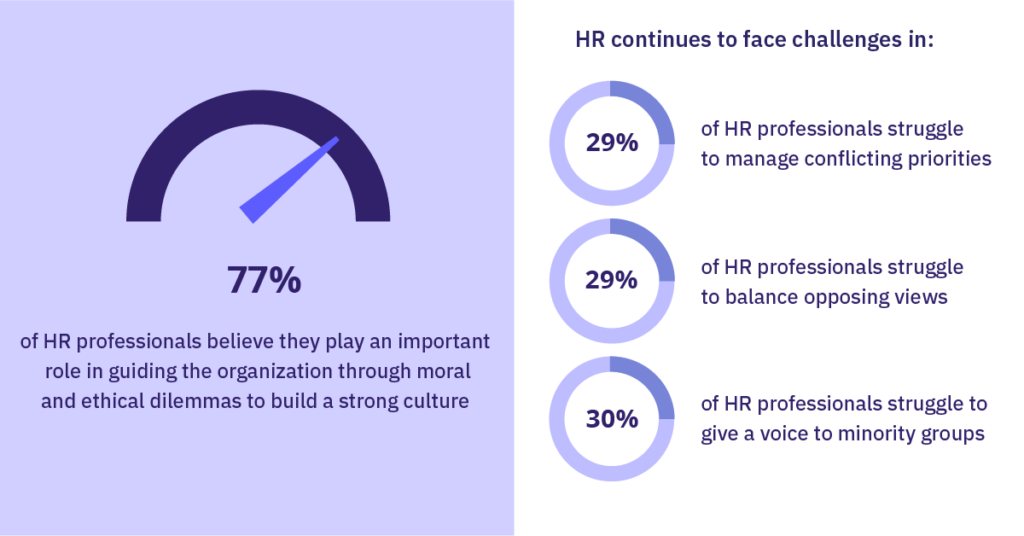
What this means
- HR’s operational vs. strategic perception: HR professionals lack confidence in their strategic partnership impact. This fuels the misconception that HR is merely a support function without business understanding or knowledge.
- Unrecognized value and contribution of HR: The “cost center” and “efficiency” narrative has dominated HR for the past decade. We need to redefine HR’s value proposition by focusing on solving business problems and aligning with stakeholders.
- Digital adoption to alleviate execution burden: Digital transformation can automate mundane HR processes, freeing up time for more meaningful work. HR’s visibility and impact can extend beyond traditional boundaries by driving digital maturity.
- HR continues to prioritize execution over impact: There’s a disconnect between the skills required from HR professionals and their alignment with business needs. HR professionals still believe that their greatest business impact lies in efficiency, cost-containment, and execution. While there is value in these activities, it limits the potential impact of HR on the business and new opportunities to contribute.
START NOW
Reposition the HR function and the contribution of HR professionals through tangible actions
- Educate the business on what strategic HR looks like: Ensure that business stakeholders are aligned on what tangible strategic HR contributions entail and what they should expect from senior HR leaders.
- Clearly align HR’s focus and resources to business outcomes: Ensure clear alignment between HR’s priorities and business strategy and reflect this in how success is measured. Speak the language of the business when discussing HR impact and instill this within the HR function.
- Drive digital adoption within HR: Determine how HR can responsibly adopt and use technology to drive efficiencies and impact. Develop the relevant digital skills and confidence to use and critically think about technology.
Assess the HR team’s current skills and confidence levels, as well as the ability to deal with the complexity of a strategic environment. Identify where more development or exposure is needed.
Implement HR governance that incorporates the HR voice in strategic conversations at different levels within the business. Specifically, include HR professionals within the digital and technology conversation while building the general business acumen of the end-to-end function.
THE STATE OF HR CAREERS
Challenge 5. HR career drivers at odds with business needs
Our research into the state of HR careers revealed that HR career motivation and work enjoyment do not match with business realities. Additionally, HR careers are often unplanned and unstructured.
Career entry into HR is late
72% of HR professionals start their careers before age 30, with only 18% starting in HR as their first or second role. Most HR professionals have experience in humanities, social sciences, or administration before entering HR.
Career motivation and definition of success
Most HR professionals start their careers in HR because they are motivated by their interest in people and want to help create business impact.
This is also reflected in how HR professionals describe their personal definition of career success. For 23% of respondents, success means making a meaningful impact on work and society, while 40% define success as their own professional growth and development.
As for their preferred work, 37% of HR professionals want to focus on translating business needs into effective HR interventions, while 24% prioritize implementing HR processes that create a memorable employee experience, the second highest-ranked interest.
Work enjoyment
On the other hand, compliance-related activities like governance and legislation of people practices are less enjoyable for a significant number of HR professionals (36%). Similarly, 30% of HR professionals rank leveraging data and analysis to uncover insights as their least preferred activity compared to other core HR functions.
Leveraging HR technologies in collaboration with product owners to drive business impact was ranked as the most enjoyable activity for only 2% of HR professionals, with most indicating it as their 5th or 6th preference.
HR careers are mostly unplanned
HR careers are often unplanned and unstructured. Many HR professionals stumble upon this career path by chance or opportunity. This unplanned or unstructured approach to HR careers is also evident in how HR careers unfold. As many as 17% of individuals reported their careers in HR don’t follow a distinct path or trajectory. Instead, personal interests, motivation, and opportunities largely shape their career path.
Linear HR career paths persist
Most HR career paths are still traditional and linear in nature, meaning professionals steadily climb the ranks within a specific HR domain (32% of respondents). However, some HR professionals (23%) opt for upward and lateral progression between different HR areas of expertise.
Around 17% of respondents also indicated that they had gained in-depth knowledge and responsibility within a particular skill set by moving within the broader HR function (17% of respondents). Fewer HR professionals (11%) explore careers that involve transitions between HR and other business functions. In addition, the top three rated factors influencing HR career decisions are centered around professional ambitions, values, and interests.
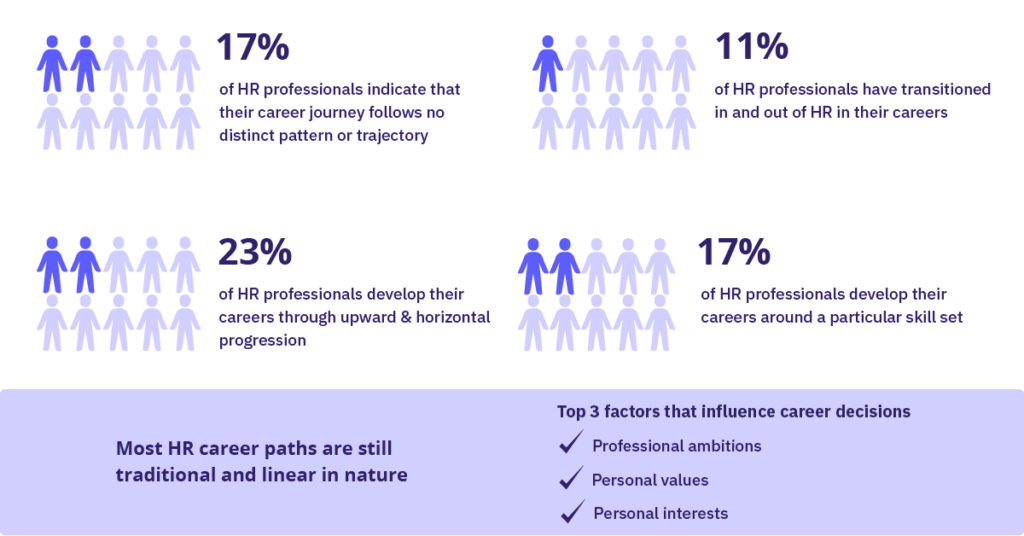
What this means
- Overemphasis on people skills when entering the profession: Unlike other professions, HR careers often start in an unstructured manner. This could be one of the reasons why there is an overemphasis on “people” skills rather than business acumen or technological expertise at the onset.
- Mismatch between career success and organizational performance indicators: HR professionals seek personal growth, development, and impact, with a focus on people, while organizations define HR success in terms of efficiency, compliance, and business impact.
- Limited interest in technology: HR professionals generally show a lack of interest and adaptation to emerging technologies, including generative AI, when compared to other functions. This poses significant challenges for HR professionals in the future.
- Lack of relevant HR experience: As a result of the unstructured nature of HR careers, many HR professionals start and continue their careers in HR without relevant HR experience or qualifications. This means they are required to learn on the job, often without access to structured development opportunities.
START NOW
Revisit and redefine the HR career to ensure a healthy HR talent pool with the right skills
- Upskill, reskill, and cross-skill: This approach allows HR professionals to develop skills through practical exposure and is crucial for robust HR development.
- Structure and formalize career development of HR professionals: Consider structuring HR Academies with a future HR skills focus. Align HR Academies to the requirements of strategic HR operating models and new competency profiles. At AIHR, we believe that HR professionals require T-shaped competencies, and HR Academies can be structured to focus on building these skills.
- Make HR careers attractive: For HR to become a sustainable profession, we need to make the HR career attractive to job seekers, driving HR as a choice of career as opposed to an accidental occurrence. This can only be done if we create more structure regarding early HR careers while making non-traditional career paths more visible and actionable within organizations.
Assess how HR careers typically unfold within your organization and how this impacts the development of HR expertise.
Intentionally create structured HR upskilling initiatives to ensure that HR professionals entering into the function are supported and enabled with the necessary skills, regardless of their career entry point.
The bottom line
There is no question that the future of HR holds the potential to make a substantial impact on both organizations and individuals. However, the HR profession must acknowledge and address some of its systemic barriers and challenges to reach this potential. This requires a reinvention and repositioning of the HR profession, HR careers, and the development of HR professionals.
Our research shows that there is work to be done within HR to prepare for future needs. HR is maturing as a function, and a change is required to move into its next evolution. An evolution where the profession comes into its own and finally finds its voice within and beyond the organization, and drives the change that will impact individuals, organizations, and society into the future.




